2.7: The Mexican Muralist Movement
- Page ID
- 226922
\( \newcommand{\vecs}[1]{\overset { \scriptstyle \rightharpoonup} {\mathbf{#1}} } \)
\( \newcommand{\vecd}[1]{\overset{-\!-\!\rightharpoonup}{\vphantom{a}\smash {#1}}} \)
\( \newcommand{\id}{\mathrm{id}}\) \( \newcommand{\Span}{\mathrm{span}}\)
( \newcommand{\kernel}{\mathrm{null}\,}\) \( \newcommand{\range}{\mathrm{range}\,}\)
\( \newcommand{\RealPart}{\mathrm{Re}}\) \( \newcommand{\ImaginaryPart}{\mathrm{Im}}\)
\( \newcommand{\Argument}{\mathrm{Arg}}\) \( \newcommand{\norm}[1]{\| #1 \|}\)
\( \newcommand{\inner}[2]{\langle #1, #2 \rangle}\)
\( \newcommand{\Span}{\mathrm{span}}\)
\( \newcommand{\id}{\mathrm{id}}\)
\( \newcommand{\Span}{\mathrm{span}}\)
\( \newcommand{\kernel}{\mathrm{null}\,}\)
\( \newcommand{\range}{\mathrm{range}\,}\)
\( \newcommand{\RealPart}{\mathrm{Re}}\)
\( \newcommand{\ImaginaryPart}{\mathrm{Im}}\)
\( \newcommand{\Argument}{\mathrm{Arg}}\)
\( \newcommand{\norm}[1]{\| #1 \|}\)
\( \newcommand{\inner}[2]{\langle #1, #2 \rangle}\)
\( \newcommand{\Span}{\mathrm{span}}\) \( \newcommand{\AA}{\unicode[.8,0]{x212B}}\)
\( \newcommand{\vectorA}[1]{\vec{#1}} % arrow\)
\( \newcommand{\vectorAt}[1]{\vec{\text{#1}}} % arrow\)
\( \newcommand{\vectorB}[1]{\overset { \scriptstyle \rightharpoonup} {\mathbf{#1}} } \)
\( \newcommand{\vectorC}[1]{\textbf{#1}} \)
\( \newcommand{\vectorD}[1]{\overrightarrow{#1}} \)
\( \newcommand{\vectorDt}[1]{\overrightarrow{\text{#1}}} \)
\( \newcommand{\vectE}[1]{\overset{-\!-\!\rightharpoonup}{\vphantom{a}\smash{\mathbf {#1}}}} \)
\( \newcommand{\vecs}[1]{\overset { \scriptstyle \rightharpoonup} {\mathbf{#1}} } \)
\( \newcommand{\vecd}[1]{\overset{-\!-\!\rightharpoonup}{\vphantom{a}\smash {#1}}} \)
\(\newcommand{\avec}{\mathbf a}\) \(\newcommand{\bvec}{\mathbf b}\) \(\newcommand{\cvec}{\mathbf c}\) \(\newcommand{\dvec}{\mathbf d}\) \(\newcommand{\dtil}{\widetilde{\mathbf d}}\) \(\newcommand{\evec}{\mathbf e}\) \(\newcommand{\fvec}{\mathbf f}\) \(\newcommand{\nvec}{\mathbf n}\) \(\newcommand{\pvec}{\mathbf p}\) \(\newcommand{\qvec}{\mathbf q}\) \(\newcommand{\svec}{\mathbf s}\) \(\newcommand{\tvec}{\mathbf t}\) \(\newcommand{\uvec}{\mathbf u}\) \(\newcommand{\vvec}{\mathbf v}\) \(\newcommand{\wvec}{\mathbf w}\) \(\newcommand{\xvec}{\mathbf x}\) \(\newcommand{\yvec}{\mathbf y}\) \(\newcommand{\zvec}{\mathbf z}\) \(\newcommand{\rvec}{\mathbf r}\) \(\newcommand{\mvec}{\mathbf m}\) \(\newcommand{\zerovec}{\mathbf 0}\) \(\newcommand{\onevec}{\mathbf 1}\) \(\newcommand{\real}{\mathbb R}\) \(\newcommand{\twovec}[2]{\left[\begin{array}{r}#1 \\ #2 \end{array}\right]}\) \(\newcommand{\ctwovec}[2]{\left[\begin{array}{c}#1 \\ #2 \end{array}\right]}\) \(\newcommand{\threevec}[3]{\left[\begin{array}{r}#1 \\ #2 \\ #3 \end{array}\right]}\) \(\newcommand{\cthreevec}[3]{\left[\begin{array}{c}#1 \\ #2 \\ #3 \end{array}\right]}\) \(\newcommand{\fourvec}[4]{\left[\begin{array}{r}#1 \\ #2 \\ #3 \\ #4 \end{array}\right]}\) \(\newcommand{\cfourvec}[4]{\left[\begin{array}{c}#1 \\ #2 \\ #3 \\ #4 \end{array}\right]}\) \(\newcommand{\fivevec}[5]{\left[\begin{array}{r}#1 \\ #2 \\ #3 \\ #4 \\ #5 \\ \end{array}\right]}\) \(\newcommand{\cfivevec}[5]{\left[\begin{array}{c}#1 \\ #2 \\ #3 \\ #4 \\ #5 \\ \end{array}\right]}\) \(\newcommand{\mattwo}[4]{\left[\begin{array}{rr}#1 \amp #2 \\ #3 \amp #4 \\ \end{array}\right]}\) \(\newcommand{\laspan}[1]{\text{Span}\{#1\}}\) \(\newcommand{\bcal}{\cal B}\) \(\newcommand{\ccal}{\cal C}\) \(\newcommand{\scal}{\cal S}\) \(\newcommand{\wcal}{\cal W}\) \(\newcommand{\ecal}{\cal E}\) \(\newcommand{\coords}[2]{\left\{#1\right\}_{#2}}\) \(\newcommand{\gray}[1]{\color{gray}{#1}}\) \(\newcommand{\lgray}[1]{\color{lightgray}{#1}}\) \(\newcommand{\rank}{\operatorname{rank}}\) \(\newcommand{\row}{\text{Row}}\) \(\newcommand{\col}{\text{Col}}\) \(\renewcommand{\row}{\text{Row}}\) \(\newcommand{\nul}{\text{Nul}}\) \(\newcommand{\var}{\text{Var}}\) \(\newcommand{\corr}{\text{corr}}\) \(\newcommand{\len}[1]{\left|#1\right|}\) \(\newcommand{\bbar}{\overline{\bvec}}\) \(\newcommand{\bhat}{\widehat{\bvec}}\) \(\newcommand{\bperp}{\bvec^\perp}\) \(\newcommand{\xhat}{\widehat{\xvec}}\) \(\newcommand{\vhat}{\widehat{\vvec}}\) \(\newcommand{\uhat}{\widehat{\uvec}}\) \(\newcommand{\what}{\widehat{\wvec}}\) \(\newcommand{\Sighat}{\widehat{\Sigma}}\) \(\newcommand{\lt}{<}\) \(\newcommand{\gt}{>}\) \(\newcommand{\amp}{&}\) \(\definecolor{fillinmathshade}{gray}{0.9}\)
Image 2.18 David Alfaro Siqueiros, Mexican History or the Right for Culture, National Autonomous University of Mexico (UNAM), 1952-56, (Mexico City, photo: Fausto Puga) CC BY-NC SA.
SIQUEIROS AND MEXICAN HISTORY
At the National Autonomous University of Mexico (UNAM) in Mexico City visitors enter the rectory (the main administration building), beneath an imposing three-dimensional arm emerging from a mural. Several hands, one with a pencil, charge towards a book, which lists critical dates in Mexico’s history: 1520 (the Conquest by Spain); 1810 (Independence from Spain); 1857 (the Liberal Constitution which established individual rights); and 1910 (the start of the Revolution against the regime of Porfirio Díaz). David Alfaro Siqueiros left the final date blank in Dates in Mexican Histor y or the Right for Culture (1952-56), inspiring viewers to create Mexico’s next great historic moment.
THE REVOLUTION
From 1910 to 1920 civil war ravaged the nation as citizens revolted against dictator Porfirio Díaz. At the heart of the Revolution was the belief—itself revolutionary—that the land should be in the hands of laborers, the very people who worked it. This demand for agrarian reform signaled a new age in Mexican society: issues concerning the popular masses—universal public education and health care, expanded civil liberties—were at the forefront of government policy.
MEXICAN MURALISM
At the end of the Revolution the government commissioned artists to create art that could educate the mostly illiterate masses about Mexican history. Celebrating the Mexican people’s potential to craft the nation’s history was a key theme in Mexican muralism, a movement led by Siqueiros, Diego Rivera, and José Clemente Orozco—known as Los tres grandes. Between the 1920s and 1950s, they cultivated a style that defined Mexican identity following the Revolution.
The muralists developed an iconography featuring atypical, non-European heroes from the nation’s illustrious past, present, and future—Aztec warriors battling the Spanish, humble peasants fighting in the Revolution, common laborers of Mexico City, and the mixed-race people who will forge the next great epoch, like in Siqueiros’ UNAM mural. Los tres grandes crafted epic murals on the walls of highly visible, public buildings using techniques like fresco, encaustic, mosaic, and sculpture-painting.
One of the earliest government commissions for a post-Revolution mural was for the National Preparatory School, a high school in Mexico City affiliated with UNAM. During the 1920s Los tres grandes and other artists completed works throughout the school’s expansive exteriors and interiors.
MURALS FOR THE PALACE OF FINE ARTS
In 1934 the government inaugurated the Palace of Fine Arts Mexico City, which soon became the nation’s most important cultural institution. The Palace’s Museum, Mexico’s first art museum, opened the same year with works by two of Los tres grandes: Rivera’s Man, Controller of the Universe, 1934, a recreation of Man at the Crossroads (painted at Rockefeller Center and destroyed the year before), and Orozco’s Catharsis, 1934.

Image 2.19 José Clemente Orozco, Catharsis (partial view), 1934 (Museum of the Palace of Fine Arts, Mexico City, photo: ryan griffis) CC BY-NC.
The title of Orozco’s painting dates to 1942, when an art historian speculated that the fire at the top of the composition symbolized catharsis, and thus “the only possibility of saving and purifying civilization” as it succumbed to the excesses of moral depravity. The laughing central figure jerks the viewer into an immoral world, where the malevolent aspects of modern life—senseless warfare, destructive technology, and prostitution—run rampant.
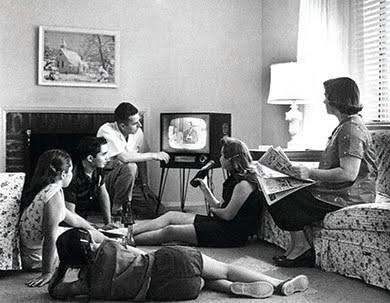
Image 2.20 David Alfaro Siqueiros, Torment and Apotheosis of Cuauhtémoc (detail), 1950-51 (Museum of the Palace of Fine Arts, photo: Jaontiveros) CC BY-NC.
In Torment and Apotheosis of Cuauhtémoc, 1950-51, another mural at the Museum of the Palace of Fine Arts, Siqueiros explores the violent period of the Conquest. In this mural Spanish soldiers torture the Mexican tribal leader for information on the location of the treasure they seek. The Mexican motherland, symbolized by the blood-stained female figure, stretches her arms protectively over his still figure. Siqueiros’ penchant for sinewy limbs, showcased in the UNAM murals and exemplified here in the bodies of Cuauhtémoc and his praying companion, underscore the tension in this encounter.
The Mexican Revolution was a watershed moment in the twentieth century because it marked a true break from the past, ushering in a more egalitarian age. With its grand scale, innovative iconography, and socially relevant message, Mexican muralism remains a notable compliment to the Revolution. The way the muralists reoriented history, recovered lost stories, and drafted new narratives continues to stir audiences and inspire artists, like the Chicano muralists that emerged in the U.S. Southwest. The fact that their in-situ masterpieces can still be seen publicly in Mexico and beyond is a testament to their relevance, popularity, and the power of their didactic message.
Top of Form
Art in itself can be seen as a revolution and bring out intense emotions onto the artist and the viewer. During and after the Mexican Revolution, many artists in Mexico felt an inspiration to make their own revolution and reveal it to the world through murals. Murals were originally used as a way to spread visual messages to an illiterate population, which opened up new possibilities in the inclusion and sense of community within a people. These messages provided artists with the ability to share pride in their identities, historical traditions, or political beliefs. The work of “The Big Three” of Mexican muralists, Diego Rivera, Jose Clemente Orozco, and David Alfaro Siqueiros, as well as artists Fernando Leal and Aurora Reyes Flores, all led to the normalization of public art and inclusion of the everyday person into the world of art.
Collectively, you will see artworks from “the big three”, and two other artists who were very important to the movement but did not achieve the same status as the three most well-known Mexican muralists. Starting off with probably the most notorious of the artists in this exhibition, is Diego Rivera. The two selected murals for Rivera are La Historia de México and El Hombre Controlador del Universo. Rivera arrived back to Mexico in 1922, when the country was still struggling with the aftermath of the Revolution, and he took his murals as a venture to address the everyday person and tell stories of Mexican society. The next mural was made by Fernando Leal. Los Danzantes de Chalma was very pertinent to this art movement because it brought up the Indigenous peoples and roots of Mexico during a time when previous to that, the native people of Mexico were consistently repressed and taken out of the narrative in society. Fernando Leal is known to be one of the first muralists of this movement.
Jose Clemente Orozco told the darker side of the Revolution through his artwork. Having been the only one out of “the big three” to actually be in Mexico during the time of the war, he had a first hand experience of the bleakness of Mexican society at the time. His two chosen artworks, The Trench and El Hombre en Llamas, show his despondency and lack of hope caused by the horrors he had witnessed in his lifetime. Being the oldest of the great three, Orozco was able to see that there were always two sides of everything, and during a time where many were glorifying the war, he made sure to bring the focus back onto those who had to suffer for all to be confident in the state of the country Mexico was in at the time.
The next artist is Aurora Reyes Flores. She was the first female muralist of this movement as well as the first exponent of the movement. Unfortunately she does not receive the same fame as her male counterparts however she deserves so much more recognition than she gets. The mural Atentado a los Maestros Rurales, is one of her most famous works and she is known for being a trailblazer for Mexican women in art and transforming public art in Mexico. The final two artworks are made by the third great of Mexican muralism, David Alfaro Siqueiros. He focused a lot on the political aspects of art and the war and that is why his work the Birth of Fascism is included even though it is a painting and not one of his murals. His second work displayed is Portrait of the Bourgeoisie, which also reveals his socialist views through his art. His artworks became very famous in particular because Mexico had just gotten out of a dictatorship and he was able to speak and relate to the working class and lower-income people of Mexico without words.
Using murals as a way to spread visual messages to the people of Mexico, these artists created an identity all Mexicans could relate to. By promoting a sense of pride in cultural identity, a brotherhood in a shared grief, and providing a representation for populations that had been silenced, these muralists changed the way art was perceived, forever. The Mexican Muralism Movement, a movement born from the Mexican Revolution, created a revolution of its own in the art world.
Exhibition
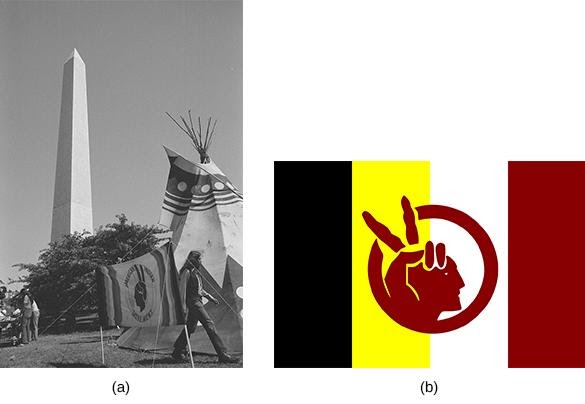
Image 2.21 Diego Rivera, La historia de México, Fresco 70 x 9 m 1929 – 1935 (National Palace, Mexico City, Mexico) CC BY SA.
Depicted is the large mural Diego Rivera made to portray the history of Mexico. The three panels all come together at the bottom where pre-colonial Mexico is shown to illustrate Mexico’s indigenous roots and the wars and oppression they have been through. This was made to build a sense of pride for all Mexicans and to represent native people in a better light. Even though this is called The History of Mexico, there is also a part of the mural, specifically shown on the South Wall, where the artist adds in an optimistic view of the future of Mexico now that the revolution has come to a close.
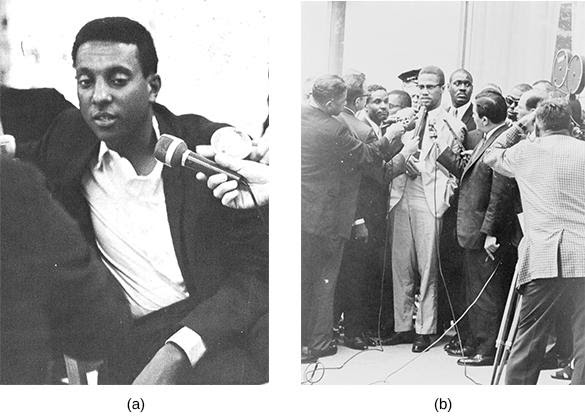
Image 2.22 Diego Rivera, El hombre controlador del universe, 4,80 x 11,45 m Fresco 1934 (Museo de Bellas Artes, Mexico City, Mexico) CC0 US.
Depicted here is a replica of the original work which was first commissioned to be placed in New York City’s Rockefeller Center. However it was taken down when the artist, Diego Rivera, added in depictions of communist leaders. This version of the mural allowed Rivera to complete the finished work without restrictions in revealing his own ideologies. In the center is a man who is surrounded by the world and its many perspectives. On each side of the man are different beliefs. On the right, Lenin, Marx, and Freidrich Engles, and on the left is Charles Darwin and John Rockefeller Jr. This artwork has become culturally significant to show the relationship between politics, the economy, and creative freedom.

Image 2.23 Fernando Leal, Los Danzantes de Chalma, Fresco 1922. (San Ildefonso College, Mexico City, Mexico) CC BY-SA.
Displayed above is the artist’s rendition of a real event that had happened during that time. Leal had overheard that during a ritualistic dance that was meant to worship the Virgin Mary, her statue had fallen over, revealing a statue that was carved into the wall of the native Mexican goddess of water, which had previously been hidden. Although Fernando Leal did not receive the same amount of fame as “The Big Three”, he was one of the first to start off this movement, and bring indigenous Mexican culture into the limelight.
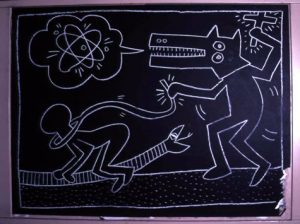
Image 2.24 Jose Clemente Orozco, The Trench, 4 x 2 m Fresco 1926. (Museum of Modern Art, New York, New York) CC BY-SA.
Depicted above are soldiers in the Mexican Revolution in a very somber presentation. While other artists focused on the hope the future after the war promised, Orozco was actually in Mexico during the war and saw all the struggles and fighting the people Mexico had to face. Orozco focused on the body language of the men in the mural, making sure that their sorrow, vulnerability, and suffering can be felt through the art. For many, Jose Clement Orozco was able to put humanity back into those affected by the war unto the public eye.
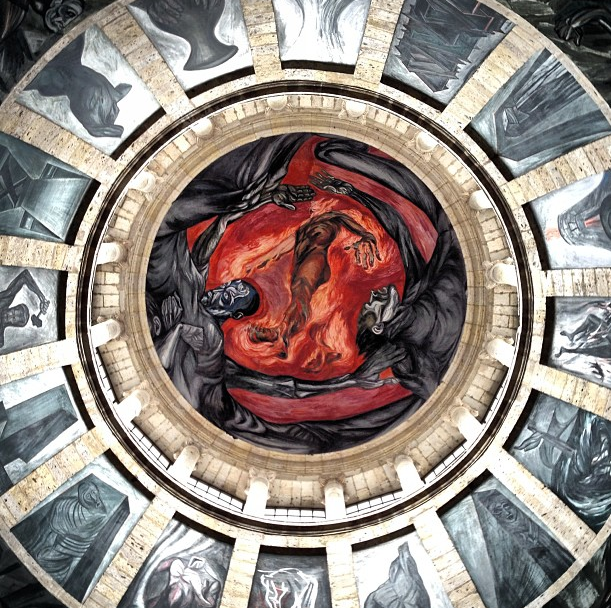
Image 2.25 Jose Clemente Orozco, El hombre en llamas 27 m Fresco 1939. (Hospicio Cabanas, Guadalajara, Mexico) CC BY-SA.
Depicted above is the fresco also known as “The Man of Fire”, in this surrounded by a series of arched panels, a self-sacrificing man is in the center of it all. Orozco was surrounded by the horrors of the world throughout his entire life and in this mural, we see his version of a glimmer of hope. Represented in this fresco is Mexico’s struggle with both indigenous and European forces, and trying to find a middle ground between it all.
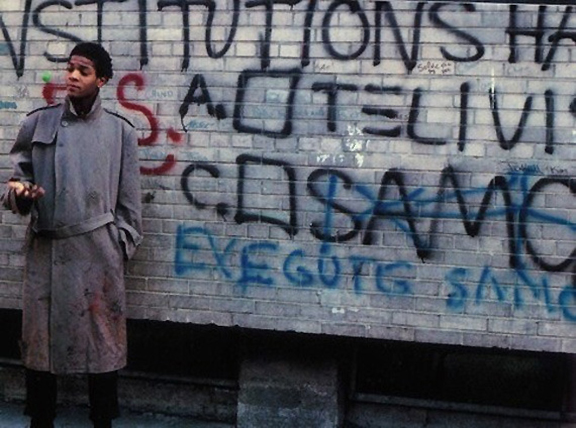
Image 2.26 David Alfaro Siqueiros, Birth of Fascism 75x65cm, pyroxylin on masonite 1936. (Sala de Arte Publico Siqueiros, Mexico) CC0.
Shown above is a woman giving birth to a monster which represents fascism in this painting. Although known for his murals, Siqueiros also created many paintings during the Mexican Muralism movement. The woman depicted is said to be a whore who is having a painful birth to a monster during a storm who wishes to be saved. To have such an ominous and painful painting be called the “birth”, it sends a very clear message of his political beliefs to the viewer.
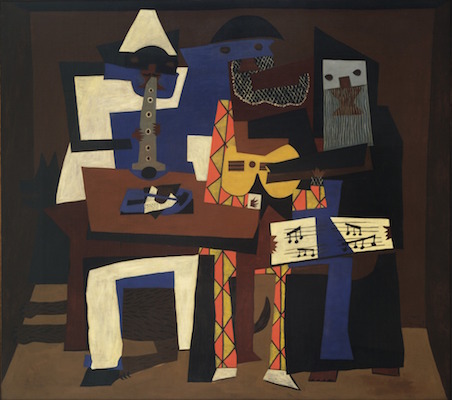
Image 2.27 David Alfaro Siqueiros, Portrait of the Bourgeoisie 92 m, Fresco 1939. (Electrical Workers Union Building, Mexico City, Mexico) CCO
Illustrated above was David Alfaro Siqueiros’ warning to the people of the dangers of intersecting the government, capitalism, and industry. On the left, we see the burning buildings that represent the order of the past while the rest of the walls depict his fears of nature and machine intertwining. In Marxist contexts, the bourgeoisie is the class who owns most of society’s wealth and means of production, this mural portrays the artists’ concerns with how society will unravel if they continue to be the ones in power and the lower classes are continued to be ignored.
Remixed by:
Bravo, Doris. “Mexican Muralism: Los Tres Grandes David Alfaro Siqueiros, Diego Rivera, and José Clemente Orozco (Article).” Khan Academy, Khan Academy,https://www.khanacademy.org/humanities/ap-art-history/later-europe-and-americas/modernity-ap/a/mexican-muralism-los-tres-grandes-david-alfaro-siqueiros-diego-rivera-and-jos-clemente-orozco Accessed 6 May 2021. CC BY-NC-SA 3.0 US.
Fernandez, Nicole Fierro. “The Mexican Muralism Movement.” https://mexicanmural.commons.gc.cuny.edu/writings/ October 18, 2018. Accessed 6 May 2021. CC BY-NC SA 4.0.

